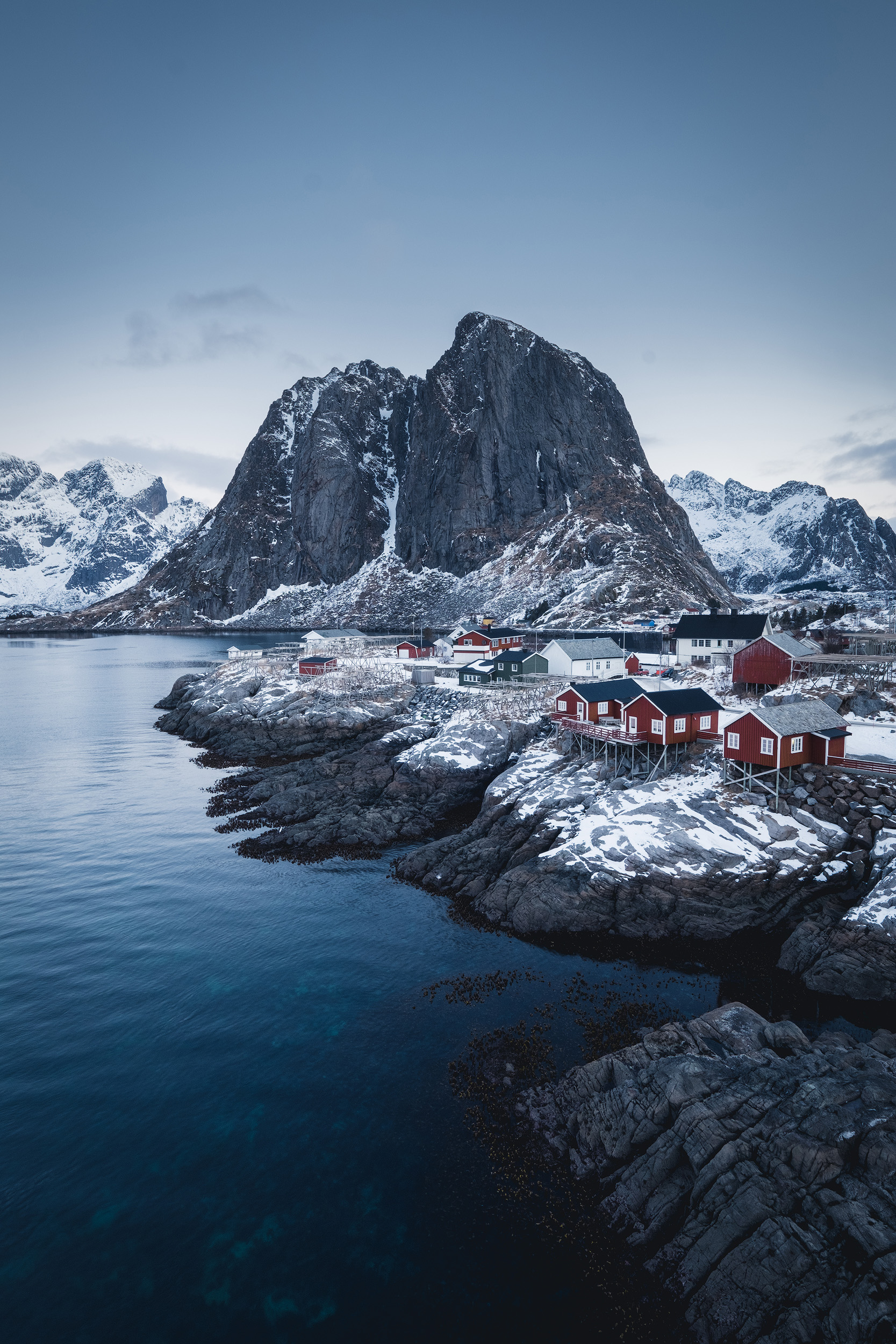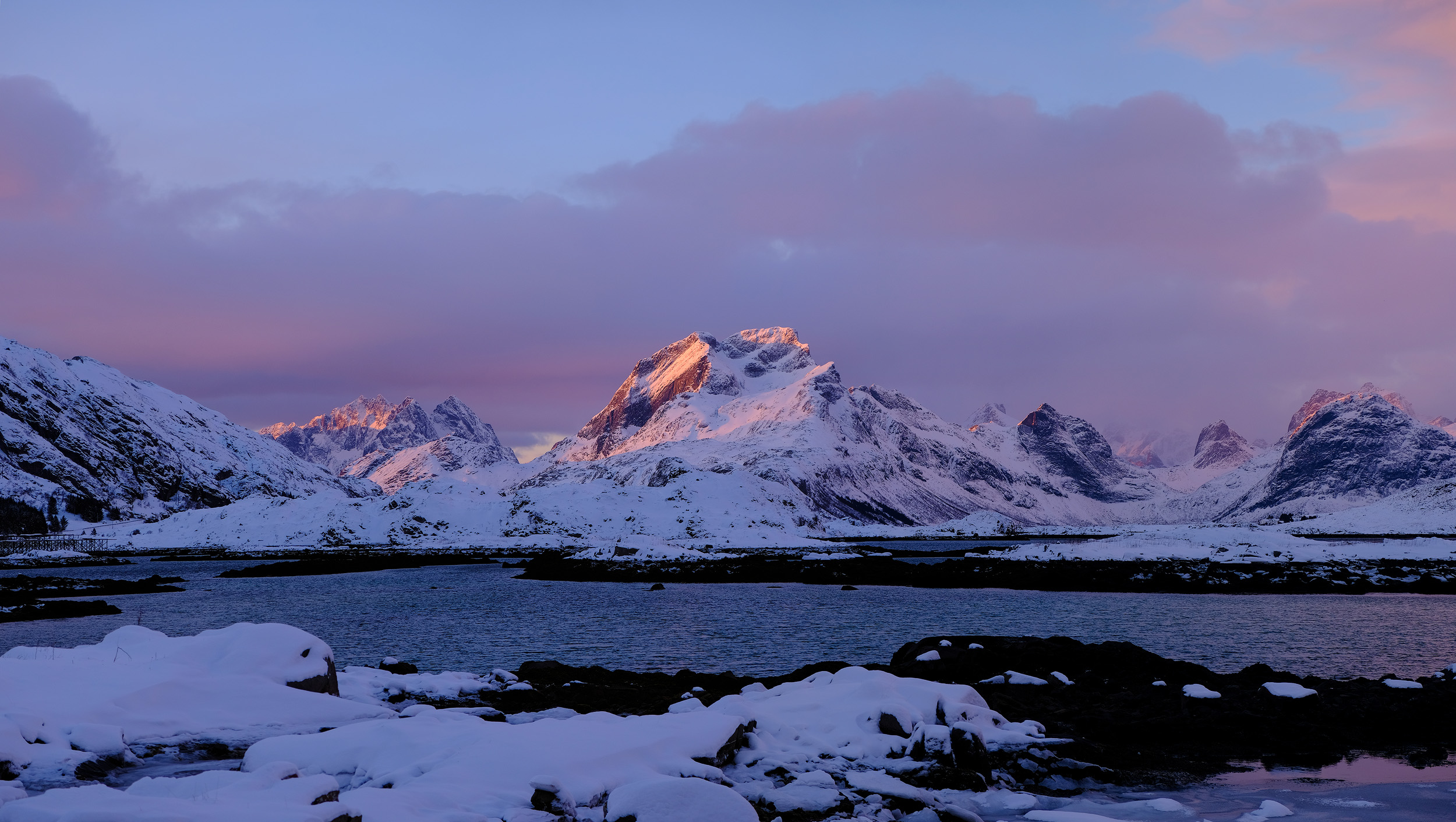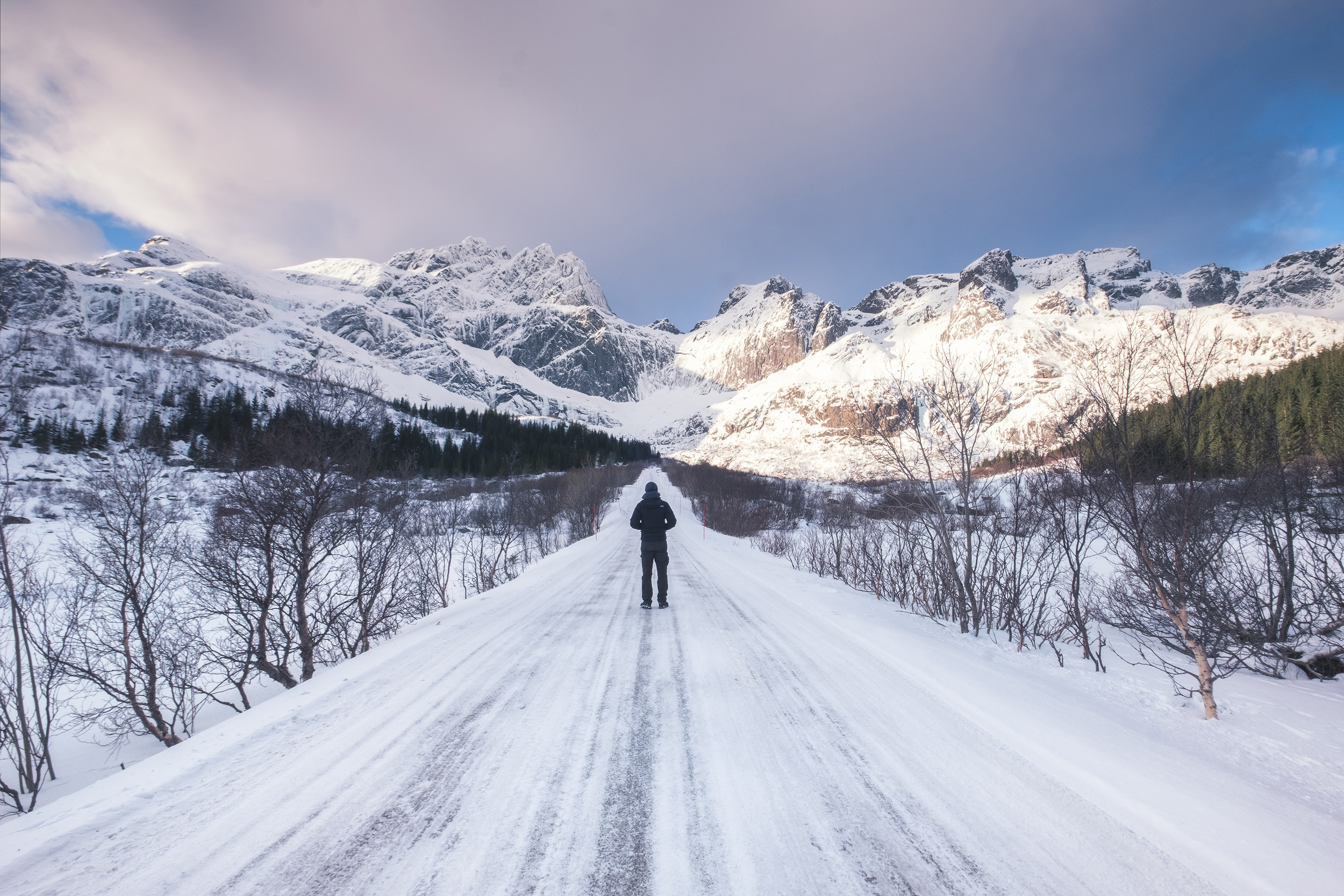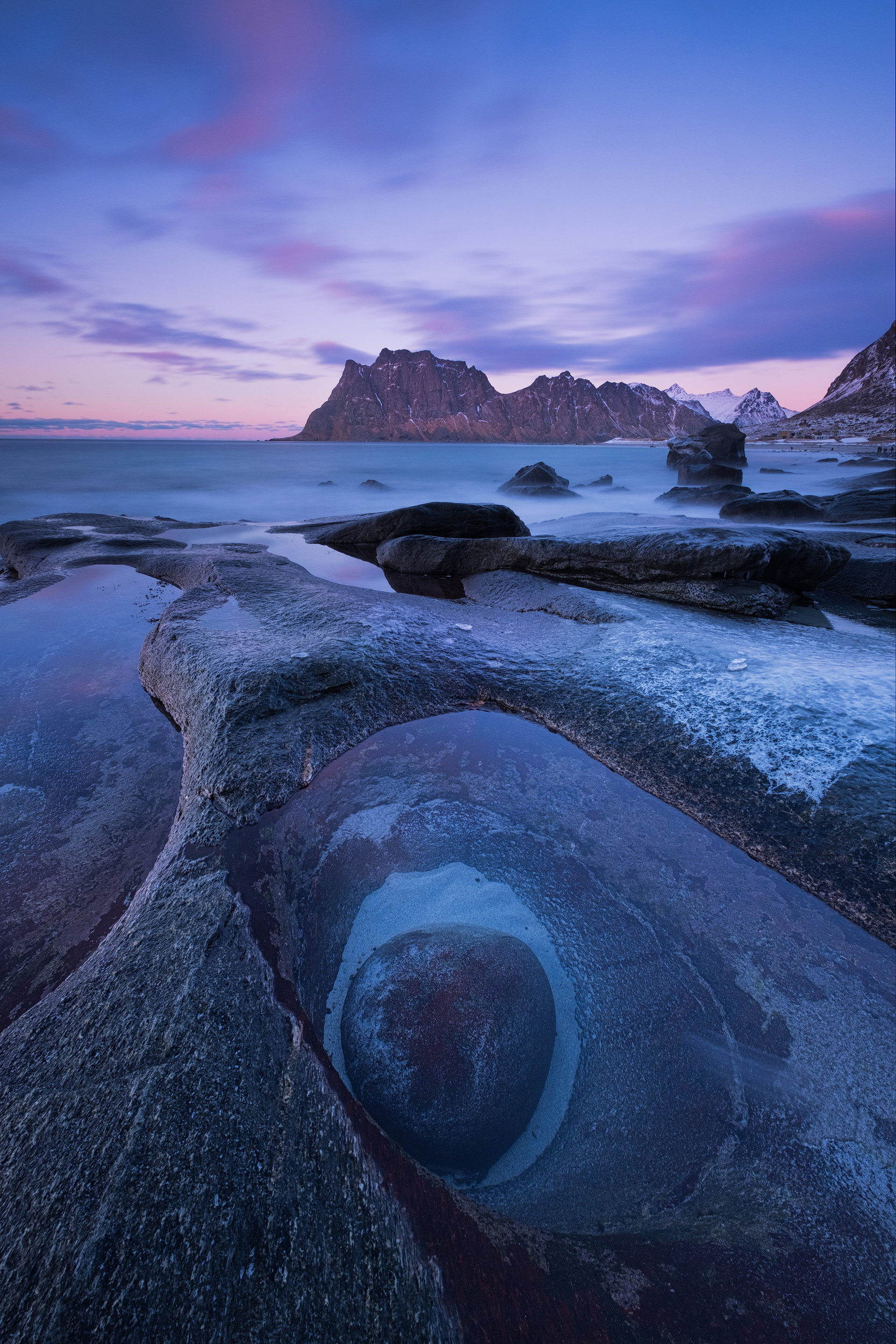THE LOFOTEN ISLANDS: PART 1
Back at the beginning of March I headed to the Lofoten Islands in northern Norway with Kostas and Konstantinos, my colleagues from Light Explorer Photography Workshops, to spend some time shooting in this incredible place. There’s something about snow covered landscapes that’s so incredibly evocative, especially since where I live in Lisbon winter just means grey clouds and rain.
Lofoten is an archipelago of small islands in the arctic circle characterised by dramatic peaks that rise from fjords and ocean beaches. It’s a stunning place, the kind that when you first see images of it it seems almost as though it can’t be real. From a photography point of view it’s just a wonderful place to spend some time, particular in winter when there’s a blanket of white snow across everything, and when there’s a possibility of seeing the dancing green light of the aurora at night.
We arrived in Tromsø, one of Norways most northern cities and a lovely place situated on islands in the middle of fjord. From here it’s a 7 hour drive to Lofoten, and while it’s possible to fly directly to the islands themselves via the airport at Leknes, we wanted to see a little more of the north of the country at this time of year so opted to take the long and scenic route. Driving south we were quickly overwhelmed by how beautiful this place is in winter, and after crossing the bridge to enter the Lofoten archipelago we immediately wished we could spend more time in the eastern part of the islands which are absolutely stunning, but quite a drive from where we were basing ourselves in the westernmost islands.
After the long drive we settled into the house we’d rented in Fredvang and then for our first evening headed to Reinefjord, a fjord in the island of Moskenesøya at the very tip of the chain of the archipelago (although there are a few more scattered islands a little more distant off the coast). Reinefjord is almost certainly the most well known view in Lofoten, with a handful of small islands scattered across the fjord, each covered with wooden huts like the iconic red fisherman’s huts on the islands of Hamnøy. The view from the bridge to the island is perhaps one of the best known in Norway but that takes nothing away from what a wonderful scene it is, even with a clear sky in the blue hour.
We were back for sunrise the next morning and took our time capturing the location from the blue hour until after the sun came up and the clouds took on some beautiful colour. At this latitude the sun rises and sets slowly in winter which means the colour in the sky lasts for longer and the golden hour seems to go on for hours.
We spent a couple of hours shooting Hamnøy before heading up to the viewpoint in the village of Reine, from where you can see all the scattered island on the fjord and the granite peaks that so dramatically overlook them.
By the time we got back to our accommodation it was almost 3 hours after the sun had come up but the sun was still low enough to give wonderful light and the series of winding frozen streams next to our house made for a particularly interesting foreground
We spent the rest of the day exploring the fjords around us and experiencing how quickly weather conditions can change here. Our first stop was at Skjelfjord and already after the bright and sunny morning the clouds were starting to roll in and create a much more moody atmosphere. We spent some time wandering around on the thick ice on the frozen fjord, and while it’s an impressive place there’s not really a focus point for images so I played around with different foregrounds and used the drama in the sky, and I also got some drone images as well.
We continued on our journey and just after passing through the village of Ramburg I saw this small red hut that overlooks the stretch of beach there. It’s one of those scenes that you can’t resist capturing, but even as I was I knew in my head it would work much better with more snow and resolved to return here to shoot the scene again if we had the right conditions during the trip. I didn’t realise at the time that we would get them just a few hours later that very day.
By mid-afternoon the clouds had rolled in and heavy snow was falling. At the southern end of Flakstadpollen, the next fjord along, the snow was already really deep on the frozen ice of the fjord but from the road we could just make out a thin strip of water which looked like a stream but was actually a gap between the sheet ice that covered the fjord and the snow covered land. The water appeared incredibly blue against the white of the snow and as the clouds rolled in the landscapes disappeared in a white out. It was a wonderfully atmospheric scene and something that I almost never get a chance to shoot so we spent a good couple of hours in the falling snow composing shots around the water and the blocks of ice that were drifting along it.
From here it was a short trip down the road past the frozen lake of Storvatnet to the village of Nusfjord, one of the oldest fishing communities on the islands. The location of the village at the end of a fjord surrounded by peaks, with the red rorbu cabins on stilts above the water made for some fantastic images in the snow. This kind of weather is great to shoot in as it creates a naturally minimalistic scene with details in the landscape hidden under a blanket or whiteness, and the near monochrome effect it creates everywhere is particularly beautiful.
By the time we left it was getting late and I fancied returning to the red hut I’d shot earlier in the day with the white out conditions we were now experiencing. As soon as we got back to the hut I knew the shot would work as the blizzard had totally removed the horizon and covered the area around the hut with lots of snow, making the whole composition much more minimal and stark, with the hut providing a splash of colour.
After that I wandered down to the beach in front of the hut to take some more shots. Living in Portugal I’m no stranger to the beach, but I have to admit this is the first time I’ve ever seen a beach covered in fresh snows. The contrast between the white snow and blue water was wonderful, but the image needed a focus point so I set the camera up on a tripod with the shutter on a timer so I could walk around in front of the camera and do a self portrait.
It snowed for the remainder of the night and when we got up the next day everywhere was covered in thick snow. We didn’t have any particular plans for our sunrise shoot, but as we were crossing over the bridges that connect Fredvang to the other side of the fjord, the view along the length of the fjord from the snow covered islands between the bridges caught all our eyes. We pulled in and headed out into the snow and were treated to a wonderfully colourful sunrise with the first light of day picking out the tops of the snowy white peaks.
After breakfast we spent some more time driving around and making the most of the fantastic light that lasts for so much of the day. On the previous day when we'd driven to Nusfjord we'd all noticed the incredible views of the Flakstadøy peaks from the road and I wanted to get a capture there. There are so many trees and bushes there that the only clean foreground is the actual road itself, but even then that's not enough as an image requires more of a focal point than just the road and the peaks in the background. One of the best ways to do this, as well as give the image some scale is to put a figure in the image, so once again I set the camera on a timer and walked into my shot.
Later on in the day we made the slightly longer trip over to Vestvågøya, the neighbouring island to Moskenesøya, and home to some particularly stunning beaches like Haukland and Uttakleiv. We’d decided to shoot the latter as it’s one of the most iconic scenes in Lofoten, and the whole beach has so many wonderful rocks and boulders that you’re almost spoilt for choice for foregrounds. As there were already a few photographers shooting amongst the boulders on the beach I walked up onto the rocks to the left of the beach where there are some wonderful pools in the smooth, curving rocks. Once again we were treated to some fantastic light as the rock face across the bay was painted a deep red by the low sun, and then after the sun had gone down and the tide receded a little, I could make my way down the rocks to a different composition with a submerged boulder surrounded by sand at the bottom of the pool. There was still plenty of colour in the sky in the blue hour, and with lower levels of light I was able to blur the sea more with longer exposures.
By now we were around half way through the trip and couldn’t believe how lucky we’d been with the light and conditions. We were still looking forward to finding more locations and spending more time in this incredible place.
If you’re interested in coming to visit the Lofoten Islands with me take a look at my 2019 Landscape Photography Workshop. Alternatively you can sign up my newsletter for more information about workshops
You can see images from my trip to the Lofoten in my Norway gallery here.















